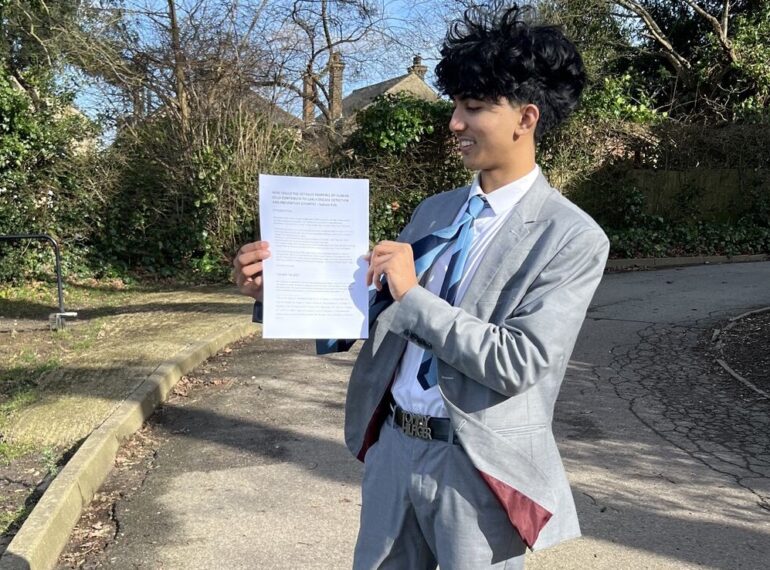
One of the great highlights of QE’s sporting calendar – the Rugby Sevens tournament – brought a day of spirited, exciting play.
With the weather good, the 49th Annual QE Barnet Rugby Sevens Tournament drew some 56 teams to battle it out for the cup and plate trophies, including many from the country’s leading rugby schools.
The U14 event was held, as usual, on the School’s four pitches at Queen’s Road. However, with Barnet Elizabethans RFC’s pitches unavailable this year, Haberdashers’ Boys’ stepped in to host the U16s.
Ipswich School won the cup and Tonbridge School took the plate at U14 level, while for the older boys, Berkhamsted School secured the cup and Merchant Taylors’ the plate.
Headmaster Neil Enright said: “Our Sevens tournament is always a happy occasion at which visitors, alumni, staff and our own parents come together with the boys to enjoy the games and meet up with friends. With the sun shining brightly, there was a real air of celebration this year, while the players delivered some truly thrilling play.”
“My congratulations go to our winners, and I am, of course, grateful to Habs for hosting the U16 event.”
Staging the tournament at QE was a huge logistical effort involving the hard work and co-operation of the entire PE & Games department, the London Society of Referees, many pupil helpers and volunteers from The Friends of Queen Elizabeth’s. The event was sponsored once again by school and club sports tour specialists, inspiresport.
QE’s own teams faced tough opponents in their group stages.
Head of Rugby Ollie Di-Lieto said: “Although, sadly, both the U14s and U16s lost their matches in the group stage, they gave us some exciting attacking rugby and provided plenty of highlights to remember the day by.”
Although Junu Park, of Year 9, gained much ground with some outstanding running and his teammates at times moved the ball into space well, the squad found it harder to maintain constant pressure, with the breakdown fiercely contested even with the reduced numbers on the field, Mr Di-Lieto said.
The final U14 game against Robert Clack School, from Dagenham, saw QE come agonisingly close, losing in the end 24–26.
“All our games were played in a good spirit and with great commitment against some of the best rugby schools around,” said Mr Di-Lieto, who thanked all involved.
- Click on the thumbnails below to view the images.



 Human cell-mapping was, he said, a topic “completely alien” to him, but he soon got to grips with it, deriving “great satisfaction” as he learned the subject matter by initially “mind-mapping almost random information” and then quickly forming links to join up this information.
Human cell-mapping was, he said, a topic “completely alien” to him, but he soon got to grips with it, deriving “great satisfaction” as he learned the subject matter by initially “mind-mapping almost random information” and then quickly forming links to join up this information.
 Headmaster Neil Enright said: “I congratulate our students for taking the initiative and organising this visit, for the preparation they did ahead of taking part in the debates, and for the level of their performance in the debates: they did the School proud!”
Headmaster Neil Enright said: “I congratulate our students for taking the initiative and organising this visit, for the preparation they did ahead of taking part in the debates, and for the level of their performance in the debates: they did the School proud!” Two other QE delegates, Chanakya and Uday, won Best Position Paper awards. Position papers are single-A4 page documents written to outline the views of the country or group the delegates are representing. Chanakya’s was for his paper for the United Nations Framework Convention on Climate Change (UNFCC) and Uday’s award was for his work for the Economic and Financial Committee (ECOFIN). Uday also received an honourable mention when it came to selecting the best delegate across all the committees.
Two other QE delegates, Chanakya and Uday, won Best Position Paper awards. Position papers are single-A4 page documents written to outline the views of the country or group the delegates are representing. Chanakya’s was for his paper for the United Nations Framework Convention on Climate Change (UNFCC) and Uday’s award was for his work for the Economic and Financial Committee (ECOFIN). Uday also received an honourable mention when it came to selecting the best delegate across all the committees.
 The 190 Year 9 boys saw Hollywood A-lister Sigourney Weaver starring in The Tempest at the Theatre Royal, Old Drury Lane.
The 190 Year 9 boys saw Hollywood A-lister Sigourney Weaver starring in The Tempest at the Theatre Royal, Old Drury Lane. “Working with our colleagues at Henrietta Barnett allowed us to put on a brilliant day and a half of activities. From a standing start, students became fully acquainted with the characters and themes of the under-appreciated Richard II. It was a treat to see students fully engaging in the dramatic activities, and speaking so knowledgeably about the Bridge Theatre performance.”
“Working with our colleagues at Henrietta Barnett allowed us to put on a brilliant day and a half of activities. From a standing start, students became fully acquainted with the characters and themes of the under-appreciated Richard II. It was a treat to see students fully engaging in the dramatic activities, and speaking so knowledgeably about the Bridge Theatre performance.” The two-day Sixth Form event centred around the production of Richard II at the Bridge Theatre production, which starred Jonathan Bailey, of Bridgerton and Wicked fame. In addition to seeing the production, the event involved:
The two-day Sixth Form event centred around the production of Richard II at the Bridge Theatre production, which starred Jonathan Bailey, of Bridgerton and Wicked fame. In addition to seeing the production, the event involved: